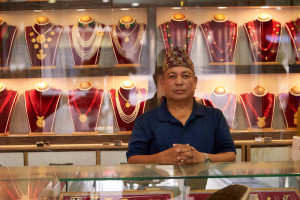Life & Style
Adolescent acne cures
Dermatologist Sabina Bhattarai gives a lowdown on how teens and pre-teens can deal with hormonal acne.
Rukusha Giri
Maintaining good skin has become a major part of many people’s daily regimes. But even individuals who are consistent with their skin care routines get the occasional breakout or two.
However, adolescents have it harder than adults when it comes to staying acne-free. Their oil glands get stimulated more than usual due to hormonal imbalances. Adolescence is also the first time they have to deal with breakouts in general. This can freak them out.
Dermatologist Sabina Bhattarai, the founder of Lavana Skin and Hair Clinic, gives The Post some tips adolescents can follow to better their skin when they get a big breakout.
Adolescent skincare routine
Acne during adolescence is very common as it is caused by the hormonal imbalances the body goes through. Additionally, teenagers tend to be physically pretty active—participating in various activities, including sports and dancing. So naturally, they produce a lot of sweat which also increases their chances of getting acne. According to Bhattarai, females are acne prone from 14 to 24 years of age, while males are acne prone between 13 and 28 years of age.
Dr Bhattarai suggests every teen and pre-teen who is struggling with acne to consult a dermatologist. “As everyone’s skin is different, it would be better if you go see a doctor and curate a skin care routine catered to your skin with the suggestions they give you,” says Dr Bhattarai.
Another solution for adolescent acne could also be taking antibiotics. Dr Bhattarai explains that antibiotics can obliterate excess skin bacteria and reduce redness and inflammation. “Topical antibiotics can treat grade 1 and 2 acne. Grade 3 and 4 acne can be treated by both systemic and topical antibiotics,” she adds.
Milder acne can be treated with doctor-prescribed ointments. Dr Bhattarai emphasises the importance of being consistent with one’s skin care routine and maintaining a balanced diet for healthy skin.
A skin care routine for beginners
Dr Bhattarai points out that it is vital teenagers have both a morning and a night skin care routine. She further adds that their skin care routine should change with the seasons.
She suggests those new to skin care should start with a simple routine—just wash your face with a face wash suitable for your skin type and then apply moisturiser and sunscreen—in that very order in the morning.
As for the night routine, simply wash your face (with a face wash), and apply a moisturiser. “It can be difficult to follow a skin care routine at night when you are exhausted and just want to sleep. But maintaining your night-time routine is the key to good skin,” says Bhattarai.
Better avoid serums
While serums are getting quite popular among skin care enthusiasts these days, Dr Bhattarai maintains that they should only be used after consulting with a doctor. Specific serums suit specific skin types, so the dermatologist suggests individuals—especially adolescents who don’t have much experience with skin care—avoid using these products unless they are prescribed by the doctor.
Routines for dry and oily skin
For teens and pre-teens with dry skin, Dr Bhattarai suggests switching their regular face wash with a gentle cleanser. Individuals with dry skin can also use cream-based moisturisers and sunscreens that are thicker in consistency. Look for products with aloe vera and cocoa butter, as these ingredients are known to be good moisturisers. Adding essential oil to their night-time routine is also an option.
“For adolescents with oily skin, double cleansing is a must,” says Dr Bhattarai, adding that they should opt for gel-based moisturisers and sunscreens.




 20.12°C Kathmandu
20.12°C Kathmandu










